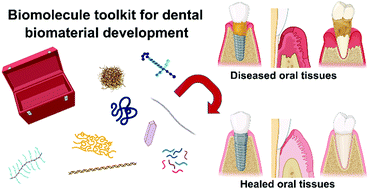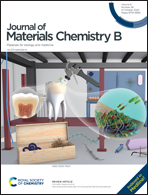Harnessing biomolecules for bioinspired dental biomaterials
Abstract
Dental clinicians have relied for centuries on traditional dental materials (polymers, ceramics, metals, and composites) to restore oral health and function to patients. Clinical outcomes for many crucial dental therapies remain poor despite many decades of intense research on these materials. Recent attention has been paid to biomolecules as a chassis for engineered preventive, restorative, and regenerative approaches in dentistry. Indeed, biomolecules represent a uniquely versatile and precise tool to enable the design and development of bioinspired multifunctional dental materials to spur advancements in dentistry. In this review, we survey the range of biomolecules that have been used across dental biomaterials. Our particular focus is on the key biological activity imparted by each biomolecule toward prevention of dental and oral diseases as well as restoration of oral health. Additional emphasis is placed on the structure–function relationships between biomolecules and their biological activity, the unique challenges of each clinical condition, limitations of conventional therapies, and the advantages of each class of biomolecule for said challenge. Biomaterials for bone regeneration are not reviewed as numerous existing reviews on the topic have been recently published. We conclude our narrative review with an outlook on the future of biomolecules in dental biomaterials and potential avenues of innovation for biomaterial-based patient oral care.

- This article is part of the themed collection: 2020 Journal of Materials Chemistry B most popular articles


 Please wait while we load your content...
Please wait while we load your content...